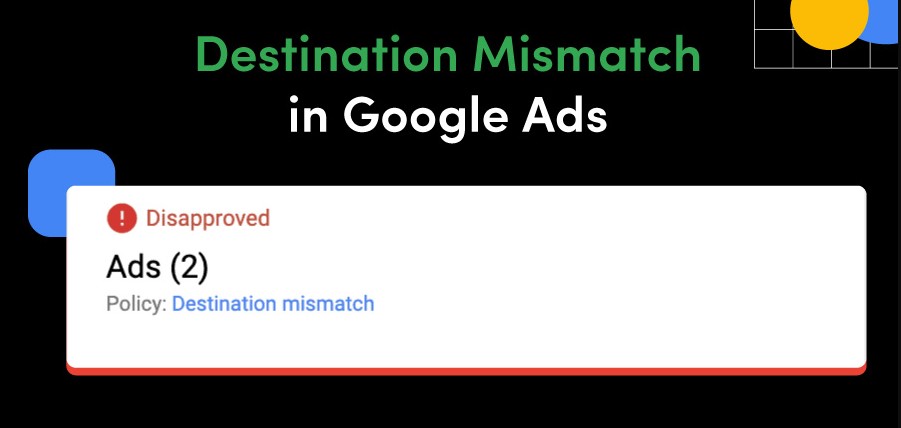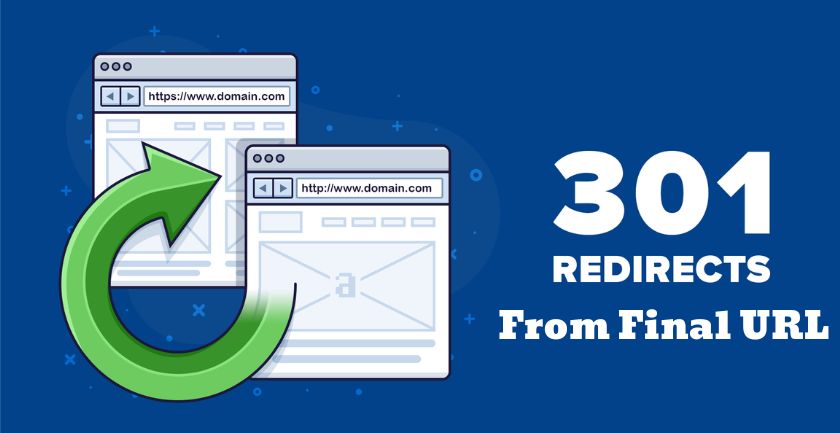Have you ever checked your search engine rankings and noticed the alarming message "Crawled Final URL Does Not Match" next to your site's listing?
Have you ever checked your search engine rankings and noticed the alarming message "Crawled Final URL Does Not Match" next to your site's listing? This cryptic error often strikes fear and confusion into the hearts of website owners and SEOs alike.
But don't panic! With a bit of digging, this error can often be easily explained and resolved. In this comprehensive guide, we'll cover all the common causes of the "crawled final URL does not match" warning and recommend proven solutions to help get your site ranking properly again.
Introduction
Google uses URLs to identify and categorize webpages. When the search engine crawls a page, it records the initial URL from the link it followed as the "crawled URL". It then stores the final landing page URL as the "crawled final URL" after following any redirects.
Ideally, the crawled URL and crawled final URL will match exactly. But sometimes changes to the website cause these two URLs to no longer align, triggering the "does not match" error.
This discrepancy confuses Google's indexing system, often causing pages to underperform or drop out of the search results entirely. So it's crucial to diagnose and fix mismatches promptly to maintain visibility.
In this guide, we'll cover:
- Common causes of the crawled final URL mismatch error
- Negative impacts on SEO and site performance
- Steps to diagnose the root cause on your site
- Actionable solutions to realign crawled URLs
- Best practices to prevent mismatches going forward
With the right understanding and troubleshooting approach, you can get this ominous error resolved and regain your lost rankings. Let's dig in!
Common Causes of the Crawled Final URL Mismatch Error
There are a few key reasons why Google may detect a mismatch between the initial crawled URL and final landing URL for your pages:
1. HTTP/HTTPS Mismatch
One of the most common causes is having inconsistent HTTP vs HTTPS versions of your URLs. For example, the crawl may start with http://www.,example.com but get redirected to the HTTPS version at https://www.example.com. The protocol mismatch triggers the error.
This frequently happens when a site only recently changed to use HTTPS sitewide but still has old HTTP links and redirects lingering. Fixing redirects to consistently point to HTTPS across the site resolves it.
2. Domain Mismatch
Another scenario is when the domain names don't match up between the crawled URL and final URL. For instance, the crawl finding www.,example.com redirecting to example.com (or vice versa).
This often occurs when proper 301 redirects are not implemented after a domain change. Aligning domains using proper redirects rectifies this issue.
3. Trailing Slashes
Sometimes, the presence or lack of trailing slashes causes mismatches. The initial crawl finding www.,example.com/page getting redirected to www.,example.com/page/ would trigger the error.
This is common on sites mixing trailing slash and non-trailing slash URL formats. Global canonical URL redirects can help avoid such conflicts.
4. Incorrect Redirect Chains
Fixing incorrect or broken redirect chains is one of the most challenging scenarios. For example, the crawl starts at URL A, gets redirected to URL B, then unexpectedly to URL C.
This requires tracing the multiple hops to find where the redirect chain is broken. Adding, fixing, or removing problematic redirects gets all pages flowing properly again.
5. Pages Changed URL Slugs
If individual page URLs change formats, like from /page-title to /page-title-2, it also causes a mismatch. This indicates the old URL is likely redirecting improperly.
Updating redirects for each renamed slug is needed to connect the old and new URL equivalents. This maintains link equity and metrics from the old URL.
6. URL Parameter Changes
Another source of mismatches is changes to URL parameters. For example, the crawl finding www.,site.com?id=123 but then redirecting to www.,site.com?productId=123.
Tweaking the URL parameter handling on the server-side to maintain a consistent format resolves this issue.
7. Session IDs in URLs
Sometimes sites append unique session IDs into their page URLs as tracking variables. If these change between the initial crawl and final URL, it will trigger the mismatch warning.
Removing session IDs from URL structures improves consistency. Using server-side tracking or cookies is better for tracking users.
8. Non-Existent Pages
Finally, one of the simplest causes is deletes pages that still have external backlinks pointing at outdated URLs. The crawler tries to access the old URL but just gets a 404.
Doing proper 301 redirects from deleted pages to relevant active pages helps avoid dead ends that confuse bots.
Now that you know the most common causes, let's explore why mismatch errors hurt your site and how to diagnose the issues on your own site.

The Negative Impacts of Crawled URL Mismatches
It may be tempting to ignore crawled URL errors, hoping Google will just figure it out. But that's a dangerous game that can seriously harm your site's performance. Here are some key repercussions:
Lost Rankings
The mismatch leads Google to see two separate URLs pointing to the same content - one from the crawl and one final. This duplication can cause the page to be demoted or removed from the index entirely. Pages may sink in rankings or disappear from search results.
Faulty Redirect Chains
Redirect chains facilitateproper URL migration when sites change domains or page locations. Broken chains send bots and users into dead ends or infinite loops - harming user experience.
Link Equity Dilution
Any equity or authority built up by the old URL won't properly pass onto the new target URL. This can drain away years of accumulated trust and relevance.
Analytics and Tracking Disruption
Changing URLs wreak havoc on your site analytics and tracking. Visits from the old URLs won't be associated with the new URLs, fragmenting data. Key metrics will be underreported, hindering optimization.
Damaged Internal Site Linking
Any links pointing internally to the outdated crawled URLs will start leading users into dead ends or redirect loops. This causes confusion and frustration for visitors.
Clearly, identifying and quickly resolving URL mismatches is critical to regaining rankings, site cohesion, and user satisfaction. Next, let's explore tips on diagnosing the issues on your own site.
Diagnosing Crawled URL Mismatches on Your Own Site
The first step is actually finding and confirming the mismatches reported by Google. Here are some tips for analyzing the issue:
1. Check Google Search Console
Head to Google Search Console, open the Index coverage report, and scan for any URLs showing the "Crawled - currently not indexed" status. Select any such URLs and view the detail.
It will show the crawled URL vs final URL comparison. Identify any discrepancies between the two formats.
2. Review Webmaster Tools Crawl Errors
Also browse through any recent Crawl Errors reported in Search Console. URLs generating "Not Followed" crawl errors are ones Google tried accessing but got redirected elsewhere.
Review the initial and redirected URLs shown to understand what is changing in the redirect flow.
3. Do Test Crawls of Problem URLs
Use online crawler tools to simulate Googlebot and enter any problematic URLs you uncovered. Analyze the redirects step-by-step to reverse engineer what is happening between the initial access URL and final destination.
4. Check Redirect Paths Site-wide
Do spot checks of key site pages and inspect the actual redirect paths live on the site. Utilize the Network tools in Chrome DevTools to view each redirect.
Compare behaviors across different sections of the site to identify any inconsistencies in URL handling.
5. Review Server Logs
Dig into your server access logs to find instances of redirects occurring. Identify any improper or faulty redirects being triggered that may be disrupting URL flows.
Isolating where the disconnect happens between Googlebot's perspective and live site behavior is key to narrowing down the culprit. Now let's get into the solutions!
Actionable Solutions to Fix Google's Crawled URL Errors
Once you've identified the specific root cause of the crawled URL mismatches on your site, you can implement the appropriate repairs. Here are some proven solutions that can realign your URLs:
1. Fix Incorrect Redirect Chains
If certain pages or sections have broken redirect flows leading to dead ends or loops, fix each redirect in the sequence. Ensure proper 301 redirects are implemented to seamlessly bridge old and new page URLs.

2. Update Domains and Protocols
Align page redirects to consistently use either www vs non-www domain versions and either HTTP or HTTPS protocols sitewide. This avoids duplication issues.
3. Standardize Trailing Slashes
Choose whether your site will use trailing slashes or non-trailing slash URL formats. Then 301 redirect all pages globally to the chosen standard format to avoid conflicts.
4. Change Problematic URL Slugs
For renamed or changed URL slugs causing mismatches, set up redirects from old to new page name formats. This passes link signals properly to the updated URL.
5. Enforce Canonical URLs
Implement canonical URL tags pointing to the ideal URL format you want indexed for each page. This overrides any duplicate content issues from URL variations.
6. Simplify URL Parameters
Reduce unnecessary or dynamic URL parameters that may change over time. Streamline to more static, cleaner URL structures to prevent format discrepancies.
7. Maintain Link Equity Flows
When migrating pages to new URLs, use 301 (permanent) redirects to pass link equity and signals from the old URL to the new destination. Never just delete and recreate pages.
With these solutions, you can troubleshoot and resolve Google's cryptic "crawled URL does not match" messages. But prevention is also key...
Best Practices to Prevent Crawled URL Mismatches
Here are some tips to avoid running into crawled URL inconsistencies down the road:
- Carefully plan site migrations and test redirect implementations before launch.
- Audit old site pages and set up proper redirects for any being retired or changed.
- Pick a URL structure convention and enforce it consistently across the site through redirects.
- Avoid dynamic, changing URL parameters that create duplicate versions of URLs.
- Segment sites into separate directories rather than subdomains to simplify URL paths.
- Use a site crawler tool to simulate Googlebot and identify any issues preemptively.
Keeping URLs clean, consistent and stable is crucial to smooth SEO operations. Let this guide help you resolve those scary "crawled URL does not match" messages the next time they arise on your site!
Conclusion
URL mismatches may seem arcane and confusing at first glance - but just remember: Google expects the URL it crawled to precisely match the final landing URL. When that breaks, pages can sink in or fall out of the search results.
Thankfully, some diligent investigation and selective use of redirects can typically realign page URLs and restore performance. Just be sure to also optimize your underlying site architecture and linking to prevent tangled redirect chains.
With a proper handle on the causes, impacts, diagnoses, and fixes for crawled URL errors, you can rest easy knowing your site's URLs will remain synced up with Google's crawlers going forward. Your high rankings and organic visibility will be safeguarded as you continue optimizing based on user intent and relevance.
So take the time to optimize and refine your site's technical foundations. When URLs, redirects, and indexation flow smoothly, it clears the path for your quality content to shine and attract searchers. The end reward will be growing organic traffic, leads, and conversions fueled by top search engine placements.
Follow us:
https://circleten.org/a/268042
https://portfolium.com/googleadsdestinationmismatch
https://www.myminifactory.com/users/googleadsdestinationnotworking
https://issuu.com/destinationnotworkinggoogleads
https://www.checkli.com/destinationmismatchgoogleads
https://lnk.bio/googleadsdestinationmismatch
https://startupxplore.com/en/person/googleadsdestinationnotworking
https://www.bark.com/en/us/company/destination-not-working-google-ads/JvBAZ/
https://www.leetchi.com/en/c/how-to-fix-destination-mismatch-in-google-ads-4765241
https://www.bestadsontv.com/profile/452625/How-To-Fix-Destination-Not-Working-Google-Ads
Kontakt:
| Pełna nazwa: | Why Google Says Your Crawled Final URL Doesn't Match? |
| Lokalizacja: | United States of America |
